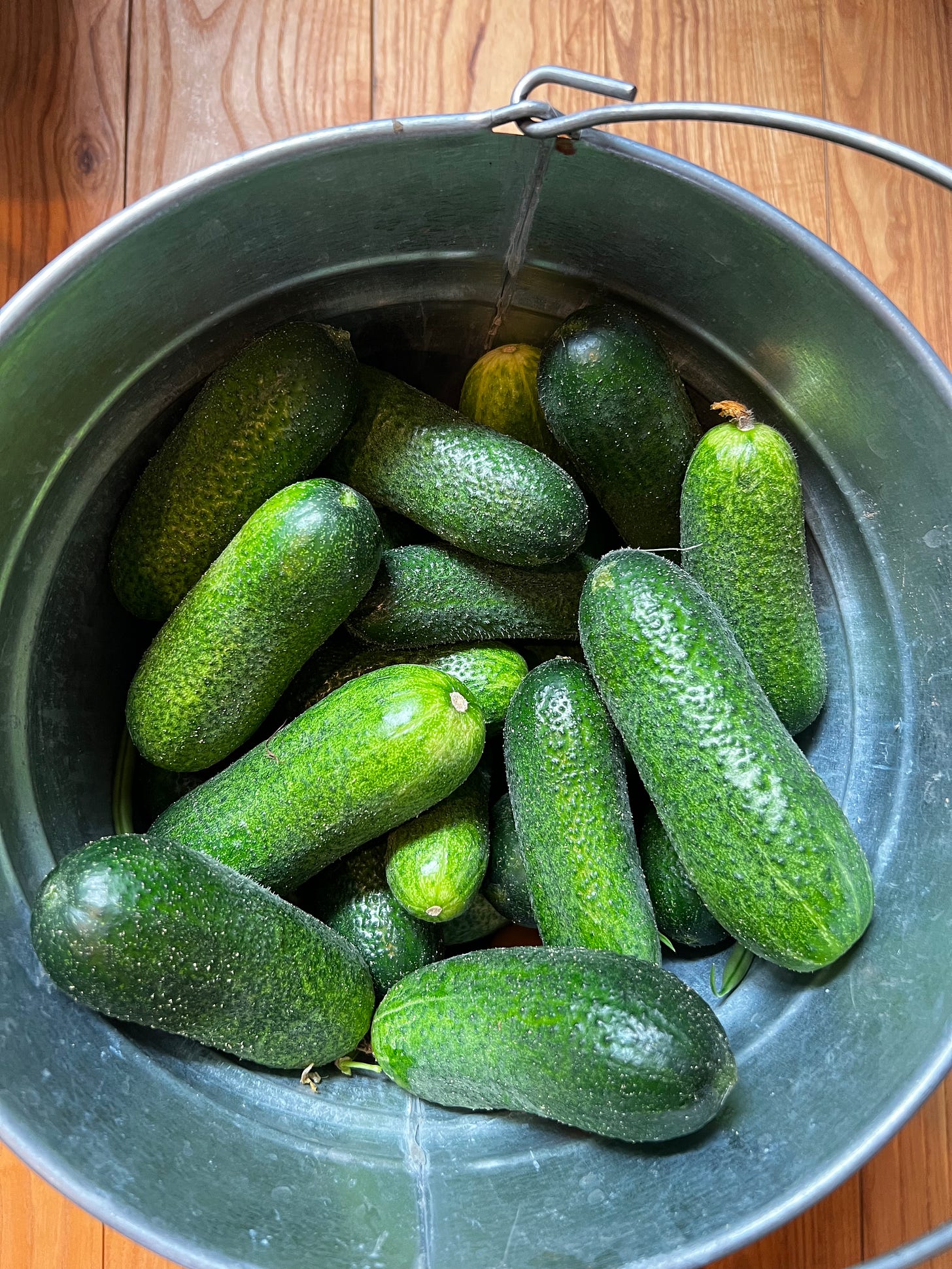Beth Hoffman co-owns and runs Whippoorwill Creek Farm, specializing in grass-finished beef and pasture-raised goats. The farm is also home to “Whippoorwill School”—which hosts cooking and writing classes and overnight stays. Check out their August Abundance Dinner, happening August 24, 2024.
I just picked at least 30 cucumbers. The cherry tomatoes are going off and the kale is standing big and beautiful in the garden. I call it a “garden” even though it is likely at least a 1/2 acre of plants, because I am reluctant to consider it part of the farm. “Farm” to me means a place that is trying to make money off of its agricultural activities—and trying to make money off produce scares the crap out of me.
Currently, small and medium-sized food farms—the type of farm many picture when imagining a “farm” in the USA—have few options to sell the nutritious fruits and vegetables we cultivate.
Wouldn’t it be a wonderful thing then, if there were better options in the state to grow, harvest, transport and distribute food people can eat?
Yes, there are farmer’s markets—the Des Moines farmers’ market for one is enormous, and John and I had the good fortune to sell at the Global Greens farmers’ market last weekend. But farmers markets’ often mean a lot of farmers trying to sell the same things to the same people at the same time.
Yet the competition is honestly not the worst of it. It’s the rainy days, the too-hot days, the days when there is something else to do in Des Moines. Days when you work your butt off to get there with the best produce in the world and no customers to buy your food.
We could also choose to sell in a Community Supported Agriculture (CSA) model where customers get a box of produce every week, chock full of whatever is available on the farm at the moment. Yet the logistics of that overwhelm me and it would require at least one—if not many—other employees.
All of this leads Iowa farmers to do the same old, same old: grow corn and soybeans easy to sell in bulk to one of the huge companies who buy it all. And, as I’ve talked about before, government-subsidized crop insurance and other programs help ensure that farmers don’t lose too much if everything goes into the toilet. The entire system in Iowa—from seed sellers to pesticide sprayers, trucking companies to grain elevators—is all set up to make corn and beans easy to sell.
We tell the people we are “feeding the world” here in Iowa—and yet we don’t even feed ourselves.
The Iowa Food System Coalition is hoping to change this situation. Setting the Table for All Iowans (which I helped write) was just released in July and is a plan to create a thriving, sustainable, and equitable food system in Iowa.
The Coalition involved more than 40 farm and food system partners representing farmers, government, universities, public health advocates and organizations, food banks and pantries, public schools, and more.
More than 600 people gave input into the plan. It highlights nine different areas in need immediate attention, like Food and Farm Business Development, which calls for support of new models of collaboration and networking that would give farms like ours more opportunities to sell products to customers.
It is thrilling for so many people to come together to advocate for change in the food system. I am intrigued about what we can accomplish together and how we can impact the status quo through collaboration and cooperation.
Will there be new ways to sell my cucumbers and tomatoes next year? Probably not. But because there is now a plan for the future of food in Iowa, groups and individuals can coordinate our efforts, work together toward common goals and prioritize our needs. We have to be in it for the long game to turn this huge agricultural ship around.
With any luck and a lot of hard work, things will look very different for our farm, someday soon.
I am honored to be a part of the Iowa Writers Collaborative! Subscribe to the Sunday Round up to get the latest of what is happening in Iowa.





Good column and like the poll.